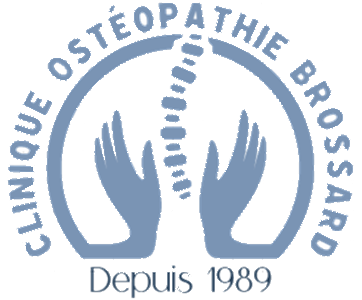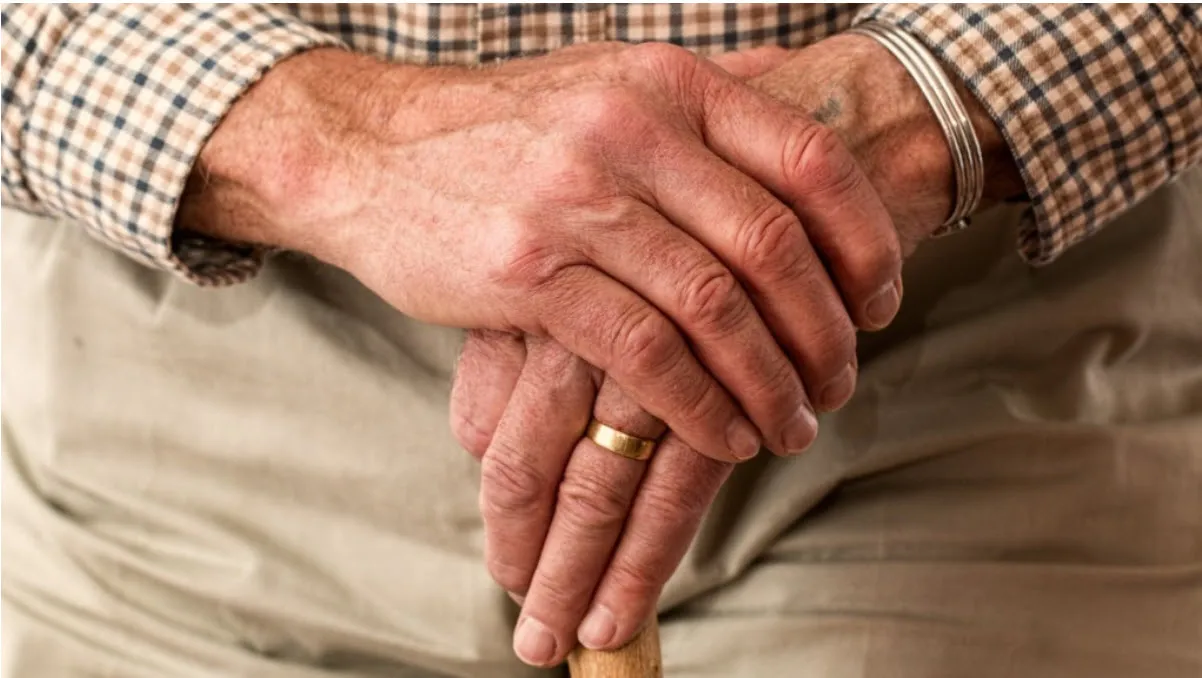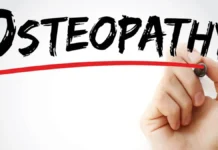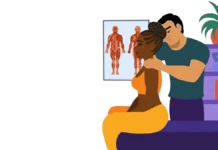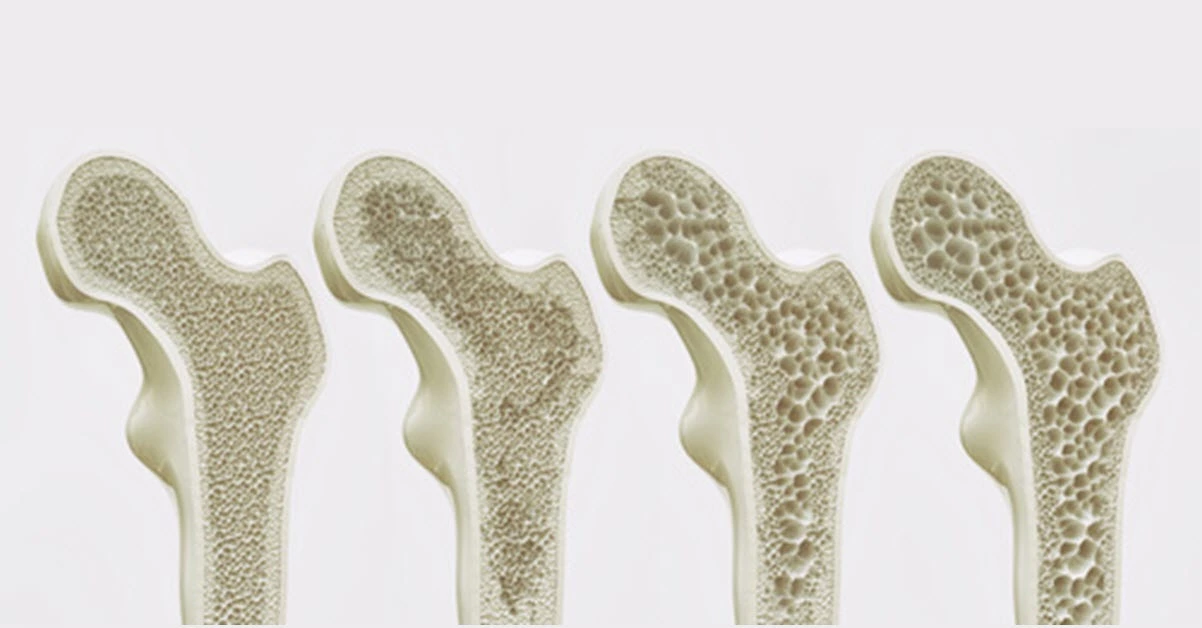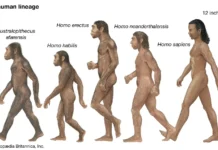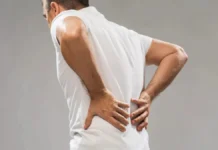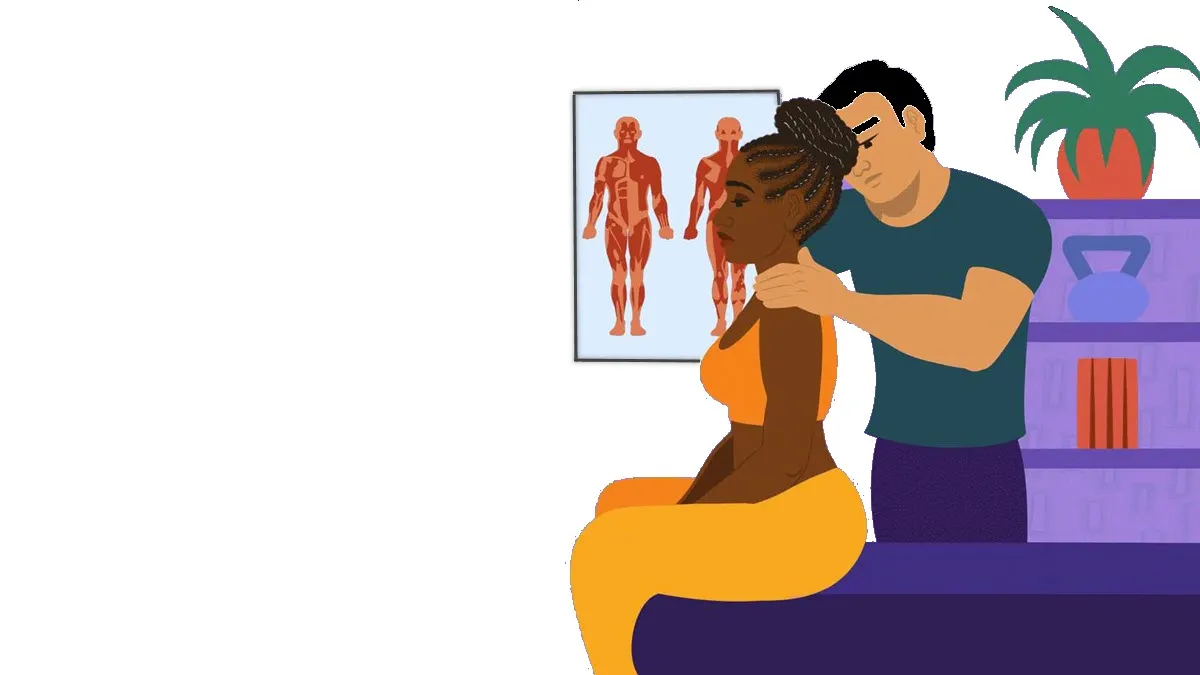Introduction
Aging is an inevitable reality, but that doesn’t mean we have to sacrifice our mobility and quality of life as we age. Older adults, often facing challenges such as joint stiffness, loss of flexibility and muscle pain, may find an unexpected ally in their quest for well-being: osteopathy.
Osteopathy is emerging as a holistic and beneficial approach to improving mobility in older adults. As we age, many individuals face problems related to loss of flexibility, decreased joint mobility, and musculoskeletal pain. Osteopathy then presents itself as a non-invasive solution which aims to restore the structural balance of the body.
Osteopaths specializing in the care of the elderly adopt a gentle and adapted approach. By assessing posture, joint mobility and the quality of connective tissues, they identify potential restrictions and imbalances. Through gentle manipulation, stretching and targeted manual techniques, osteopathy aims to restore normal joint function, relieve muscle tension and improve blood circulation.
Improving mobility through osteopathy also helps to alleviate chronic pain, thus promoting a better quality of life. This integrative approach takes into account the whole individual, considering the complex interactions between the body’s different systems.
It is essential to emphasize that any osteopathic intervention in the elderly must be adapted to their specific physical and medical condition. Open communication between healthcare professionals, including doctors and osteopaths, is crucial to ensure safe and effective care, aimed at optimizing the mobility and well-being of older people.
Causes of Loss of Mobility in the Elderly
Loss of mobility in the elderly can stem from various factors, including age-related changes, chronic health conditions, injuries, and lifestyle factors. Understanding the underlying causes of mobility decline is essential for developing effective interventions and support strategies. Here are several common factors contributing to loss of mobility in elderly individuals:
One primary cause of mobility loss in the elderly is age-related changes in musculoskeletal and neuromuscular systems. As people age, they experience natural declines in muscle mass, strength, flexibility, and coordination. These changes can impair balance, stability, and overall physical function, making it more challenging for elderly individuals to move around safely and independently.
Chronic health conditions are significant contributors to mobility decline in the elderly population. Conditions such as arthritis, osteoporosis, diabetes, heart disease, and stroke can affect mobility by causing pain, inflammation, weakness, and reduced range of motion. Managing these underlying health conditions through medication, physical therapy, and lifestyle modifications is crucial for minimizing their impact on mobility and function.
Injuries, including falls and fractures, can have a profound effect on mobility in elderly individuals. Falls are a leading cause of injury and disability among seniors, often resulting in fractures, sprains, and other musculoskeletal injuries. Fear of falling can further exacerbate mobility issues, leading to decreased physical activity and functional decline. Implementing fall prevention strategies, such as removing hazards from the home, improving lighting, and using assistive devices, is essential for reducing the risk of falls and preserving mobility in the elderly.
Neurological disorders and cognitive decline can also contribute to loss of mobility in elderly individuals. Conditions such as Parkinson’s disease, Alzheimer’s disease, and other forms of dementia can affect motor function, coordination, and spatial awareness, making it difficult for seniors to move around safely and independently. Cognitive impairment can also impact decision-making and judgment, increasing the risk of accidents and falls.
Sedentary lifestyle habits, including lack of physical activity and prolonged sitting, can contribute to loss of mobility in elderly individuals. Regular exercise is essential for maintaining muscle strength, flexibility, and cardiovascular health, which are critical components of mobility and physical function. Encouraging seniors to engage in regular physical activity, such as walking, swimming, or tai chi, can help preserve mobility and independence as they age.
Pathophysiology of Aging and Impact on Mobility
Add your title here
- Muscle Loss (Sarcopenia):
- Sarcopenia is the age-related loss of muscle mass. Over time, there is a decrease in muscle mass, muscle strength, and the ability to generate power. This can lead to decreased muscle strength and endurance, which can affect walking and other physical activities.
- Decreased Bone Density (Osteoporosis):
- Osteoporosis is a condition characterized by a decrease in bone density. As we age, bones can become more fragile and prone to fracture, which can lead to reduced mobility and ability to participate in physical activities.
- Joint Stiffness (Osteoarthritis):
- Osteoarthritis is a degenerative joint disease that occurs with age. It results from wear and tear of the joint cartilage, which can lead to joint stiffness and pain. These symptoms can limit mobility and flexibility.
- Decreased Elasticity of Related Tissues:
- Connective tissues, such as tendons and ligaments, often lose elasticity with age. This can affect joint flexibility and range of motion, which can make certain activities more difficult.
- Sensory Alterations:
- Age-related changes in sensory systems, such as vision and hearing, can influence balance and coordination. Decreased sensory perception can increase the risk of falls.
- Decreased Respiratory Capacity:
- Lung capacity naturally decreases with age, which can affect endurance and the ability to participate in prolonged physical activities.
- Decreased Cardiovascular Response:
- The heart can undergo structural and functional changes with age, which can lead to decreased cardiorespiratory capacity. This can affect endurance and the ability to maintain higher levels of physical activity.
- Neurological Changes:
- Age-related neurological changes, such as fewer neurons, can influence motor coordination and balance. This can contribute to the risk of falls.
- Decrease in Protein Synthesis:
- The body’s ability to synthesize new proteins declines with age, which can affect muscle recovery after exercise and the ability to maintain muscle mass.
- Decline of the Immune System:
- The immune system undergoes changes as we age, which can make people more vulnerable to infections and disease, which can also affect mobility.
- Environment Factors :
- Inadequate housing, lack of accessibility, and social isolation, can affect mobility in elderly individuals. Living in environments with stairs, narrow doorways, or uneven surfaces can pose challenges for seniors with mobility issues. Social isolation and limited access to transportation can also impact mobility by reducing opportunities for social engagement and physical activity
Symptoms of Loss of Mobility in Elderly People
Loss of mobility is a common concern among elderly individuals, impacting their independence, quality of life, and overall well-being. Recognizing the symptoms of declining mobility is crucial for early intervention and appropriate management. Several signs and symptoms may indicate a loss of mobility in elderly people, encompassing physical, cognitive, and emotional aspects.
One of the primary manifestations of declining mobility is difficulty in performing daily activities. Tasks that were once routine, such as walking, climbing stairs, or getting in and out of chairs, may become increasingly challenging for elderly individuals experiencing mobility issues. This decline in functional abilities can lead to frustration, dependency, and a sense of loss of control over one’s life.
Another symptom of loss of mobility in the elderly is a decline in balance and coordination. Seniors may experience unsteadiness while walking or standing, leading to an increased risk of falls and injuries. Changes in gait patterns, such as shuffling or dragging of feet, may also indicate underlying mobility issues that require attention and intervention to prevent accidents and maintain safety.
Muscle weakness and decreased strength are common contributors to loss of mobility in elderly individuals. As people age, they naturally experience a decline in muscle mass and strength, which can impair their ability to perform physical tasks and maintain balance. Weakness in the lower body muscles, in particular, can significantly impact mobility and increase the risk of falls and fractures.
Joint stiffness and pain are prevalent symptoms of mobility loss in elderly people, often associated with conditions such as arthritis or osteoporosis. Chronic joint pain can limit mobility and range of motion, making it difficult for seniors to engage in physical activities and perform daily tasks comfortably. Addressing pain management and implementing strategies to improve joint flexibility are essential components of maintaining mobility and function in older adults.
Cognitive changes, including memory impairment and confusion, can also contribute to mobility issues in elderly individuals. Cognitive decline may affect a person’s ability to plan and execute movements effectively, increasing the risk of accidents and falls. Additionally, conditions such as dementia or Alzheimer’s disease can further exacerbate mobility problems, necessitating tailored interventions and support to ensure safety and well-being.
Emotional factors, such as fear of falling and loss of confidence, are important considerations in assessing mobility loss in elderly people. Seniors who have experienced falls or near-falls may develop anxiety or apprehension about engaging in physical activities, leading to further limitations in mobility and functional independence. Addressing psychological barriers and providing reassurance and support are integral to promoting confidence and encouraging seniors to remain active and engaged in their daily lives.
List of symptoms
- Difficulties walking:
- Difficulty walking is one of the most obvious signs of loss of mobility. This can include unsteady gait, balance problems, and reduced walking speed.
- Joint Stiffness:
- Joint stiffness, particularly in the morning or after a period of inactivity, can be a symptom of conditions such as osteoarthritis, contributing to loss of mobility.
- Muscle and Joint Pain:
- Muscle and joint pain can make movement uncomfortable and limit the ability to perform certain activities.
- Stamina Decrease:
- A decrease in physical endurance may manifest as increased fatigue during or after physical activity, thus limiting the duration of physical efforts.
- Changes in Posture:
- Changes in posture, such as a forward lean, may be seen in people with mobility problems, especially due to muscle weakness.
- Increased Risk of Falls:
- Loss of mobility is often associated with an increased risk of falls. Older adults may become more hesitant to move for fear of falling.
- Decreased Flexibility:
- Decreased joint flexibility can make movement more difficult and can be a symptom of various conditions related to loss of mobility.
- Balance Problems:
- Balance problems may manifest as difficulty standing without support or when changing position.
- Reduced Ability to Perform Daily Activities:
- Loss of mobility can lead to difficulty performing daily activities such as getting up from a chair, climbing stairs, stooping, or turning.
- Social isolation :
- Older adults experiencing loss of mobility may experience social isolation due to difficulty participating in social activities or leaving the home.
- Decrease in Muscle Strength:
- Decreased muscle strength can lead to difficulty lifting objects, climbing stairs, or performing tasks that require strength.
- Alteration of Quality of Life:
- Loss of mobility can have a significant impact on quality of life, affecting independence, participation in preferred activities and overall satisfaction.
It is important to note that these symptoms can be caused by various medical conditions, and it is essential to consult a healthcare professional for an accurate diagnosis and appropriate management options. A rehabilitation program, physical therapy, and lifestyle adjustments can often help improve mobility and alleviate these symptoms.
Recommendations for Improving the Mobility of Elderly People
Improving the mobility of elderly individuals is crucial for maintaining their independence, quality of life, and overall health. A comprehensive approach that addresses physical, cognitive, and environmental factors is essential for promoting mobility and reducing the risk of functional decline. Here are several recommendations for enhancing the mobility of elderly people:
First and foremost, regular physical activity is paramount for improving and maintaining mobility in elderly individuals. Engaging in exercises that focus on strength, balance, flexibility, and endurance can help seniors build muscle mass, improve joint function, and enhance overall mobility. Activities such as walking, swimming, tai chi, and gentle stretching exercises are beneficial for promoting mobility and preventing falls.
In addition to structured exercise programs, incorporating daily movement and physical activity into seniors’ routines is essential. Encouraging activities such as gardening, dancing, or taking short walks can help seniors maintain mobility, flexibility, and cardiovascular health. Even simple tasks like standing up from a chair or walking around the house can contribute to overall mobility and function.
Addressing chronic health conditions that may affect mobility is another important consideration. Conditions such as arthritis, osteoporosis, diabetes, and heart disease can impair mobility and increase the risk of falls and injuries in elderly individuals. Managing these conditions through proper medication, lifestyle modifications, and regular medical care can help minimize their impact on mobility and functional independence.
Optimizing the home environment to support mobility and safety is crucial for elderly individuals aging in place. Removing hazards such as loose rugs, clutter, and uneven surfaces can reduce the risk of falls and accidents. Installing grab bars in bathrooms, improving lighting, and ensuring that pathways are clear and well-lit can also enhance safety and mobility within the home.
Assistive devices and mobility aids can play a significant role in improving the mobility of elderly individuals with physical limitations. Devices such as canes, walkers, and wheelchairs can provide support and stability, enabling seniors to move around more confidently and independently. It’s essential to assess each individual’s needs and capabilities to determine the most appropriate assistive devices for their specific situation.
Nutrition and hydration are essential factors that can impact mobility and overall health in elderly individuals. A well-balanced diet rich in fruits, vegetables, lean protein, and whole grains can provide the nutrients necessary for maintaining muscle strength, bone health, and energy levels. Adequate hydration is also critical for supporting joint function, digestion, and overall well-being.
Finally, social engagement and mental stimulation are vital aspects of promoting mobility and well-being in elderly individuals. Participating in social activities, hobbies, and community events can help seniors stay active, motivated, and connected to others. Mental exercises such as puzzles, games, and reading can also help maintain cognitive function and support overall mobility and independence.
List of recommendatyions
- Muscle Strengthening Exercises:
- Incorporate muscle strengthening exercises into the daily routine. This may include light weight lifting exercises, resistance exercises, and activities such as brisk walking.
- Endurance Activities:
- Encourage regular endurance activities, such as walking, swimming or cycling. These activities help maintain cardiorespiratory endurance and promote muscle health.
- Stretching and Flexibility:
- Include stretching exercises in the routine to improve flexibility. This can help reduce joint stiffness and make movement easier.
- Balance and Coordination:
- Incorporate specific exercises to improve balance and coordination. This may include exercises such as standing on one leg, tai chi exercises, or activities that stimulate proprioception.
- Physical Therapy:
- Consult a physical therapist who can design an exercise program tailored to individual needs, focusing on muscle strengthening, balance and mobility.
- Environmental Adaptations:
- Adapt the environment to facilitate mobility. This may include installing handrails in the bathroom, using non-slip mats, and rearranging furniture to create more accessible spaces.
- Mobility Aid:
- If necessary, use mobility aids such as canes, walkers, or wheelchairs to make walking easier and prevent falls.
- Regular Medical Check-up:
- Undergo regular medical check-ups to detect and manage any health issues that may affect mobility. Treat pain or mobility-related symptoms quickly.
- Maintaining a Healthy Weight:
- Maintain a healthy body weight. Being overweight can make mobility problems worse, while a healthy weight makes movement easier.
- Balanced Nutrition:
- Eat a balanced diet rich in essential nutrients to maintain muscle and bone health.
- Adequate Hydration:
- Ensure adequate hydration, as it is essential for the proper functioning of muscles and joints.
- Stress management :
- Consider stress management techniques such as meditation, yoga, or relaxation. Stress can contribute to muscle and joint problems.
- Falls Prevention Education:
- Learn fall prevention techniques, such as how to get up correctly, move around safely, and maintain balance.
- Participation in Community Programs:
- Encourage participation in community programs offering physical activities adapted to older adults, thus promoting socialization and mobility.
- Maintaining Socialization:
- Promote socialization, as it contributes to emotional and mental well-being, which can positively influence motivation to stay active.
It is important to personalize these recommendations based on the specific needs of each individual. A healthcare professional can provide advice tailored to each person’s physical condition and preferences.
Food that helps to have good mobility in the elderly
A balanced diet plays a crucial role in preserving mobility in older people. Certain foods offer specific nutrients that promote healthy bones, muscles, joints and the cardiovascular system. Here are some foods beneficial for mobility in older adults:
- Foods rich in Calcium:
- Calcium is essential for bone health. Dairy products such as milk, yogurt and cheese are excellent sources of calcium. Green leafy vegetables, almonds and canned salmon with bones are other options.
- Foods rich in Vitamin D:
- Vitamin D is important for calcium absorption. Oily fish such as salmon, sardines and tuna, as well as eggs and mushrooms, are good sources of vitamin D. Moderate exposure to sunlight is also beneficial.
- Foods rich in Protein:
- Protein is essential for maintaining muscle mass. Protein sources include lean meat, chicken, fish, eggs, dairy, legumes and nuts.
- Foods rich in Omega-3:
- Omega-3 fatty acids contribute to joint health and have anti-inflammatory properties. Salmon, flaxseed, walnuts, chia and fish oils are good sources of omega-3.
- Foods rich in Antioxidants:
- Antioxidants help reduce inflammation. Colorful fruits and vegetables, such as berries, citrus fruits, spinach and carrots, are rich in antioxidants.
- Foods rich in Magnesium:
- Magnesium is important for bone and muscle health. Food sources of magnesium include green vegetables, nuts, seeds, whole grains and fish.
- Foods rich in Vitamin C:
- Vitamin C is involved in the production of collagen, which is essential for joint health. Citrus fruits, strawberries, kiwis, peppers and broccoli are good sources of vitamin C.
- Foods rich in Vitamin K:
- Vitamin K plays a role in bone health. Green leafy vegetables like kale, spinach and broccoli are rich in vitamin K.
- Foods rich in fiber:
- A diet rich in fiber can support digestive health. Whole grains, fruits, vegetables and legumes are excellent sources of fiber.
- Hydrating Drink:
- Adequate hydration is crucial for the overall functioning of the body. Water, herbal teas, and unsweetened fruit juices are great options.
It is important to emphasize that variety and balance are key to a healthy diet. It is recommended to consult a healthcare professional or nutritionist for personalized nutritional advice based on individual needs.
Radiographic Signs Associated with Loss of Mobility in the Elderly
Radiographic signs associated with loss of mobility in older adults may vary depending on underlying medical conditions. X-rays are often used to evaluate changes in bones, joints, and the spine. Here are some common radiographic signs that may be associated with loss of mobility in older adults:
- Osteoarthritis (Osteoarthritis):
- On x-rays, osteoarthritis is often characterized by the presence of degenerative changes in the joints, such as cartilage wear, the formation of osteophytes (bone joints), and a reduction in joint space.
- Spondylosis Deformans:
- Spondylosis deformans, also called spinal osteoarthritis, can be seen as degenerative changes in the spine, including osteophytes, bone spurs, and fusion of the intervertebral joints.
- Vertebral Fractures:
- Vertebral fractures, often associated with osteoporosis, can be detected on an x-ray. Fractures can lead to loss of spinal height and changes in spinal alignment.
- Scoliosis:
- Scoliosis, a sideways curvature of the spine, can be assessed with an x-ray. The severity of scoliosis can influence spinal mobility.
- Spinal stenosis:
- Spinal stenosis, characterized by narrowing of the spinal canal, can be seen on x-rays. It can cause symptoms such as pain and stiffness, limiting mobility.
- Joint Deformities (Rheumatism):
- Certain rheumatic conditions, such as rheumatoid arthritis, can cause joint deformities. X-rays may show signs of joint destruction, deformity, and loss of function.
- Displacement of the Intervertebral Discs:
- X-rays may reveal signs of shifting intervertebral discs, such as disc herniation, which may contribute to nerve compression and associated loss of mobility.
- Changes in the Hip:
- Loss of hip mobility can be assessed by x-rays showing signs of hip osteoarthritis, such as loss of joint space, osteophyte formation, and structural changes.
- Alterations in the Knee Joints:
- Knee X-rays can reveal signs of osteoarthritis, including reduced joint space, bone spurs, and other degenerative changes that can influence mobility.
- Osteoporosis:
- Osteoporosis, characterized by decreased bone density, can be assessed with x-rays. Fractures associated with osteoporosis can have a significant impact on mobility.
It is important to note that x-rays are typically used in conjunction with other clinical assessment methods, such as physical examination and medical history, to obtain a complete picture of the situation. X-ray results should be interpreted by competent healthcare professionals to make an accurate diagnosis and develop an appropriate treatment plan.
Conclusion
In conclusion, osteopathy is emerging as a key player in improving mobility in the elderly. While the natural aging process can present challenges to mobility, osteopathy’s holistic approach offers personalized solutions to restore balance to the musculoskeletal system. Older adults can benefit from this approach not only to alleviate the symptoms of mobility loss, but also to improve their overall quality of life. As a complement to other interventions, osteopathy plays a valuable role in promoting the health and well-being of older people, enabling them to maintain active and fulfilling lives. The expert hands of osteopaths thus become essential allies in the quest for mobility and comfort throughout the golden years of life.

